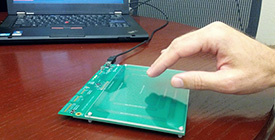
Four Types of Power Supply
MCI Transformer’s Design Engineers are very knowledgeable and can answer any questions you have regarding power supply, from unregulated linear to switch mode. Let’s take a look at the four basic power supplies:
- Unregulated Linear
- Regulated Linear
- Ferroresonant
- Switch Mode
Each type of power supply has its own unique advantages as well as disadvantages associated with it. Differences between the four types include constant voltage output, cost efficiency, size, weight and ripple.
Unregulated Linear Power Supply
Unregulated power supplies contain four basic components: a transformer, rectifier, filter capacitor, and a bleeder resistor.
This type of power supply, because of its simplicity, is the least costly and most reliable for low power requirements. The disadvantage is that the output voltage is not constant. It will vary with the input voltage and the load current, and the ripple is not suitable for electronic applications. The ripple can be reduced by changing the filter capacitor to an IC (inductor-capacitor) filter, but the cost to make this change would make use of the regulated linear power supply a more economical choice.
Regulated Linear Power Supply
A regulated linear power supply is identical to the unregulated linear power supply except that a 3-terminal regulator is used in place of the bleeder resistor.
The regulated linear power supply solves all of the problems of the unregulated supply, but is not as efficient because the 3-terminal regulator will dissipate the excess power in the form of heat which must be accommodated in the design of the supply. The output voltage has negligible ripple, very small load regulation, and high reliability, thus making it an ideal choice for use in low power electronic applications.
Ferroresonant Power Supplies
A ferroresonant power supply is very similar to an unregulated power supply except for the characteristics of the ferroresonant transformer.
The ferroresonant transformer will supply a constant output voltage over a wide variation of the transformer input voltage. The problems with using a ferroresonant power supply include that it is very sensitive to slight changes in line frequency and would not be switchable from 50 Hz to 60 Hz, and that the transformers dissipate more heat than conventional transformers. These power supplies are heavier and will have more audible noise from the transformer resonance than regulated linear power supplies.
Switch Mode Power Supplies
The switch mode power supply has a rectifier, filter capacitor, series transistor, regulator, transformer, but is more complicated than the other power supplies that we have discussed. The schematic below is a simple block diagram and does not represent all of the components in the power supply.
The AC voltage is rectified to an unregulated DC voltage, with the series transistor and the regulator. This DC is chopped to a constant high frequency voltage which enables the size of the transformer to be dramatically reduced, and allows for a much smaller power supply. The disadvantages of this type of supply are that all of the transformers have to be custom-made and the complexity of the power supply does not lend itself to low production or economical low power applications.
For further information about rectification circuits, direction on how to specify a transformer and their calculations, check out our Power Supply Design Notes.

